The Examination of Evil
Psychiatrist Robert Jay Lifton's new book is more a professional than a personal memoir. “Witness to an Extreme Century” is structured around the four topics that have occupied him most: thought reform, Hiroshima survivors, Vietnam veterans, and the Nazi doctors.Psychiatrist Robert Jay Lifton's new book is structured around the four topics that have occupied him most: thought reform, Hiroshima survivors, Vietnam veterans, and the Nazi doctors.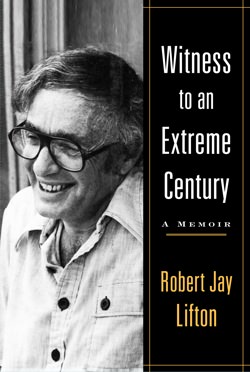
Click here to see a “Witness to an Extreme Century” excerpt published on Truthdig.
The “extreme century” of psychiatrist Robert Jay Lifton’s title refers not strictly to either the 20th or the 21st, but to the near hundred-year span he personally has weathered and scrutinized. One of the major themes of “Witness to an Extreme Century” is Lifton’s abhorrence of “totalism,” his term for universal systems, whether political, religious, intellectual or medical, that purport to explain everything, demand absolute obedience and more or less ruthlessly suppress dissent and innovation.
The book is more a professional than a personal memoir, structured around the four topics that have occupied him most, and for which he is best known: thought reform, particularly as practiced in revolutionary China; survivors of the atomic bomb in Hiroshima; Vietnam veterans; and the Nazi doctors. “My thought reform study became a leitmotif for all of my work,” he writes. “Everything I’ve done since connects somehow with totalism and mind manipulation, and all too frequently with expressions of apocalypticism.” From the start, his research has centered on intensive interviews with individuals from whose separate personalities and histories he has distilled general psychohistorical principles and overarching conclusions regarding the social and interpersonal consequences of the phenomenon under study. “Most of all, I had a tested research method, which centered on individual interviews but included a mosaic of historical and cultural influences. … Through my psychological interviews in particular, I was convinced that I could arrive at truths that could not be obtained by any other method.”
The coercive thought reform techniques employed by the Communist Chinese government were the earliest target of Lifton’s research. This thought reform was used to re-educate insufficiently submissive citizens, in part by undermining the social structure of ancestor worship. Surprisingly, he found the effectiveness of thought reform to lie not only with the coercive power of the agency imposing it, but also with an apparently deep-seated human need for such control. One of the most intriguing and instructive cases is that of a French Jesuit missionary priest who had been jailed by the Chinese. “Crucial throughout was his strong personal inclination toward totalism, toward issuing what he called a ‘blank check’ to a belief system.” The priest was torn between two antithetical belief systems, each of which he subscribed to: the dogma of his Jesuit order, and that of his Communist Chinese captors.
In 1962, Lifton began his study of survivors of the atomic bombing of Hiroshima. His initial interview is a powerful and affecting instance of the emotional stresses his research method imposed on him. Completely unprepared for the intense horrors his subject had recounted, he returned to his inn that evening, still shaken, and wrote in his notes, “I had … sought out this reality: It is the subject of my research. But at the same time I felt myself so shocked by it that I wished to deny and reject it.”
“After a few more similarly searing interviews with survivors, I found myself becoming anxious, uneasy, preoccupied with images of death, unable to sleep.” A few days later, though, his anxiety began to lift spontaneously, he became calm and focused, and he could pursue his “interview protocol” efficiently and without further personal turmoil. To allow him to process rationally the stories he was gathering, his natural empathic response to them had shut down. He came to call this involuntary process “psychic numbing,” and he likens it to the requisite detachment of a surgeon approaching a patient on whom he is to perform a delicate operation.
Despite distancing himself emotionally from his subjects in a commitment to scrupulous research, Lifton has not been dispassionate. Over the years he has increasingly channeled his acute moral sensibility into political activism. His investigations into these four horrific, arguably exemplary eras of modern history have led him to overt opposition, including civil disobedience, to nuclearism and both the Vietnam and Iraq wars. Lifton has also been an active member of Physicians for Social Responsibility since 1962, and has served on its board. He is a founding member of the International Physicians for the Prevention of Nuclear War, which was awarded the Nobel Peace Prize in 1986. Lifton’s activism forms a continuous parallel thread throughout his memoir.
In the Vietnam War, his activism assumed the lead over scholarship, though the tether between them was never sundered. The revelations in November 1969 of the My Lai massacre tipped the balance. “I was telling myself that any research and writing I now embarked on had to be directed toward exposing truths about the war in the service of opposition. The activist tail was wagging the scholar dog, even if that dog insisted on carefully probing psychological and historical evidence. I was groping for ways of expressing, in my work and in my life, deeper opposition to what America was doing and becoming.”
|
To see long excerpts from “Witness to an Extreme Century” at Google Books, click here. |
Beginning with a U.S. soldier at My Lai who had refused to join in the shooting of civilians, Lifton gathered data from veterans of the war, mostly members of Vietnam Veterans Against the War. The My Lai massacre led him to the concept of the atrocity-producing situation: “an environment so structured, both militarily and psychologically, that an average person — ‘no better or worse than you or me,’ as I was fond of putting it — upon entering it, could be capable of committing atrocities.”
Lifton’s work on Vietnam, both investigative and activist, led to his participation in a program dubbed irreverently “vets and shrinks,” weekly meetings with veterans of the war characterized at the time as “rap groups” in preference to the more formal and hierarchical “group therapy.” The program lasted nearly three years, and was to Lifton’s mind the most significant and impactful of his efforts with respect to the Vietnam War. The data he gathered and the conclusions he reached were distilled in his 1973 book, “Home From the War.”
Lifton’s experience with “vets and shrinks” seems to have crystallized his evolving modus operandi, balanced in the tension between scholarly objectivity and emotional involvement. “Now I was going further in overcoming professional distancing — still focused on psychological motivation but bringing that focus closer to the vantage point of the veterans themselves. I could closely share their death encounter and their survivor mission of exposing and ending the war. I was becoming a very different kind of professional, one who could permit himself to combine specialized knowledge with passionate plunges into moral and political realms. I don’t think I’ve ever changed back.”
It was his study of the Nazi doctors, though, that represented for Lifton the greatest test in holding emotions and moral judgment at arm’s length in the interests of science. The inherent difficulty of this subject was intensified by the fact that it was his own field, medicine, on which he would be focusing the microscope. He unhesitatingly applied the word “evil” to the behavior he was seeking insight into: “There is no better word to evoke extreme transgression producing extensive death and suffering.” Lifton selects the stories of half a dozen Nazi doctors to represent the range of collaboration with the regime and personal extenuation this group of subjects presented to him. “Ernst B.” is the first case Lifton details, the Nazi doctor from whom he says he learned most about Auschwitz, an emotionally and morally complex man who at once had gone out of his way to save Jewish lives in the camp, yet was an outspoken admirer and friend of Josef Mengele, whom he described as “the most decent colleague I met there.” Over the course of their 30 hours of interviews, Lifton’s “feelings ran a full gamut from admiration to rage and everything in between.” He coins the term “socialization to evil” to characterize Ernst B.’s ability to accommodate himself to the horrors of Auschwitz.
Another case is that of Dr. Johann G. — before the war a prominent and highly regarded physician. In collaboration with the Nazis, he had participated in typhus experiments on prisoners, actions for which he offered Lifton (as well as the war crimes court that convicted and sentenced him to prison) elaborate rationalizations. Toward the end of his interviews, he implored Lifton to use his influence to “restore his professional standing and rehabilitate [him] in the eyes of the world.” When Lifton refused, Dr. G. suddenly wept uncontrollably for half a minute. This was not a conversion, however. “He wept because it was now clear that he would die without ever having cleared his name.” What he was mourning, according to Lifton’s judgment, was “loss of conviction in his own mind concerning his claim to honorable behavior in relation to the Nazi medical system. … ”
Lifton’s reaction to these tears — not of remorse, but self-pity — is instructive, as he navigates between objectivity and involvement: “I did not reassure him in any way, nor did I make any comment or interpretation. I simply remained silent until the tears stopped. … By then I was intent on viewing the episode in terms of its significance for my research. I was relieved to see him able to function again and very aware that something important — and perhaps appropriate — had happened between us.”
In the chapter “Historical Encounters,” Lifton recounts his interviews with five cases falling somewhat outside the general framework of his study of Nazi doctors, bookended by interviews with the celebrated ethologist Konrad Lorenz and with “Hitler’s architect,” Albert Speer. It proves to be one of the most interesting chapters in the book.
It comes as a shock to learn that Lorenz, that affable author of engaging tales of animal behavior, was — Lifton says unequivocally — a Nazi doctor. He quotes a statement Lorenz had written in 1940 on “racial hygiene,” calling for “a more severe elimination of morally inferior human beings than is the case today.”
The sketch of Speer at the far end of the chapter presents us with almost the inverse: We are familiar with Speer as a notorious Nazi, intimate with Hitler, and possibly his successor; we are surprised by his apparent remorse, and even stunned by his proposal that Lifton become his psychotherapist. Collaboration in Hitler’s grandiose architectural schemes offered Speer the fantasy of becoming “someone who is surviving his own life.” Power and architecture became for him the path to immortality. Together with Hitler, he would transform the world.
Lifton presses Speer on how much he knew about the destruction of the Jews. Though he admits to having shared the “standard” and “legalized” anti-Semitism of the era, in which “one felt at home,” Speer insists he was unaware of the specifics of extermination. Lifton expresses skepticism about Speer’s claim that, though he organized construction materials for Auschwitz, he knew nothing of its function as a killing factory, but rather surprisingly gives Speer the benefit of the doubt. Though Speer sensed that terrible things were happening to Jews, he stopped short of knowing the specifics, because, “I didn’t want to know. I didn’t want to see it.”
“One had two choices with Speer,” writes Lifton. “Either one could believe that he was consciously lying all along, or one could see him as involved in a sustained inner struggle around the psychology of knowing and not knowing. I favored the latter view. I thought he was ‘living a lie’ but that he had not experienced it as a lie. Because of his extreme psychic numbing, he had ceased to feel almost anything of the abuse and suffering of Jews. … His wish to focus exclusively on his emotional bondage to Hitler — and with my help find a ‘cure’ for it — was an effort to psychologize his Nazi behavior in a way that avoided ethical truths.”
|
To see long excerpts from “Witness to an Extreme Century” at Google Books, click here. |
Lifton’s summation of his experience with Speer is nicely emblematic of his lifelong scholarly MO: “Our interviews had revealed extraordinary dimensions of enthusiasm and corruption, of complex immersion in evil — and … to learn about all this I had no choice but to sit in that room with him and his führer.”
If anything is missing from Lifton’s sketch of his scholarly method evolved over the decades, it is his relationship to the figure he refers to at one point as “the master,” and to whom he acknowledges a fundamental though unspecified debt: Sigmund Freud. At numerous points, he invokes the critique that Freudian categories are intellectually rigid, and that psychoanalytic practice adheres to narrow principles that ignore its patients’ broader humanity. In “Thought Reform and the Psychology of Totalism,” Lifton goes so far as to draw parallels “between psychoanalytic training and the thought reform process.”
And yet he also concedes, “I was profoundly affected by the Freudian revolution. … I considered it one of the great revolutions of modern thought.” During his two years of psychiatric residency, “My best teachers by far were psychoanalysts, and I learned a lot from them about what we called ‘dynamic psychiatry,’ which emphasized such basic psychoanalytic principles as unconscious motivation and the importance of childhood development.”
But we are given no sense of what this essential debt to Freud actually is. Put another way, what is the positive side of Lifton’s ambivalence? Absent is a candid view of his relationship to the body of thought admittedly so foundational to his enterprise. Though Lifton nods at “unconscious motivation,” the unconscious scarcely appears in the memoir, and is not shown to have played much of a role in his synthesizing assessments. And if Freudian categories have tended (or been driven) toward reification, Lifton’s own terminology — totalism, psychic numbing, the protean self, nuclearism, animating guilt, doubling and the like — is no less vulnerable to degenerating into cant.
In his penultimate book, “Superpower Syndrome,” “a psychohistorical look at the United States as an aberrant force that endanger[s] everyone,” Lifton has addressed the ways in which his major themes — totalism, thought reform, nuclearism, atrocity-producing war-making, and the perversion of medical science in service to political power — are applicable to U.S. global militarism. America’s apocalyptic impulses, he argues, do not differ in kind (though to be sure in degree) from those of the extremists who smashed the World Trade Center. His comparison has been shocking to some. “It was a radical argument. … While many Americans had soured on the Bush administration, it was quite another thing to attribute to our country a consistent pattern of violent extremism carried out in the name of a democratic mission, of a ‘war on terror.’ But I wished to hold nothing back.”
Tom Artin is the author of “Earth Talk: Independent Voices on the Environment,” “The Allegory of Adventure” and “The Wagner Complex.”
Your support matters…Independent journalism is under threat and overshadowed by heavily funded mainstream media.
You can help level the playing field. Become a member.
Your tax-deductible contribution keeps us digging beneath the headlines to give you thought-provoking, investigative reporting and analysis that unearths what's really happening- without compromise.
Give today to support our courageous, independent journalists.


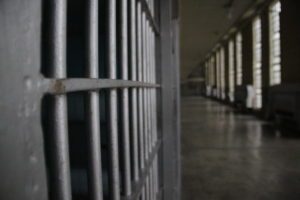
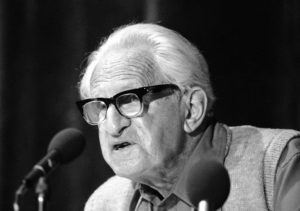
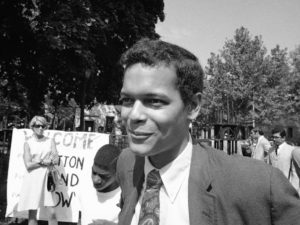
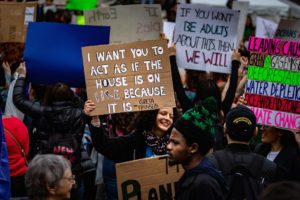
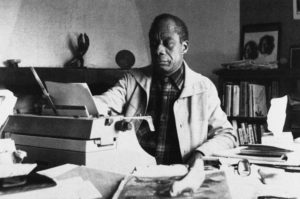
You need to be a supporter to comment.
There are currently no responses to this article.
Be the first to respond.